-
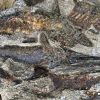 +33 +7
+33 +766 million-year-old deathbed linked to dinosaur-killing meteor
The beginning of the end started with violent shaking that raised giant waves in the waters of an inland sea in what is now North Dakota. Then, tiny glass beads began to fall like birdshot from the heavens. The rain of glass was so heavy it may have set fire to much of the vegetation on land. In the water, fish struggled to breathe as the beads clogged their gills.
-
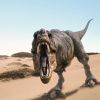 +12 +1
+12 +1Tyrannosaurus Rex Found In Canada Is The World's Largest T-Rex
Share Scotty, names as such after the bottle of scotch the researchers drank after their discovery, is a Tyrannosaurus Rex that was found in Canada. Now, scientists revealed that Scotty is the world’s largest T-Rex ever unearthed. This “Canadian” Tyrannosaurus Rex measured 13 meters in length and about 9,000 kilos in weight. According to scientists …
-
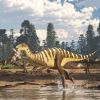 +11 +2
+11 +2Newly found Aussie dinosaur confirms diversity in ancient rift valley
The discovery of a previously unknown species of small herbivorous dinosaur in the south-eastern corner of Australia confirms that life thrived in a vast rift valley that once existed between the continent and Antarctica, palaeontologists say. The dinosaur, identified from five fossilised jaw bones, would have been about the size of a wallaby, or a Labrador. The bones were unearthed from a site in the Gippsland region of the state of Victoria, and date from the Cretaceous period, which began about 145 million years ago.
-
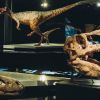 +26 +4
+26 +4T. Rex Like You Haven’t Seen Him: With Feathers
Make way for Tyrannosaurus rex, everyone’s favorite killer. A new show at the American Museum of Natural History places T. rex amid a global family of prehistoric predators.
-
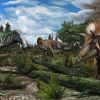 +3 +1
+3 +1Dinosaurs were thriving before asteroid strike that wiped them out
Scientists largely agree that an asteroid impact, possibly coupled with intense volcanic activity, wiped out the dinosaurs at the end of the Cretaceous period 66 million years ago. However, there is debate about whether dinosaurs were flourishing before this, or whether they had been in decline due to long-term changes in climate over millions of years.
-
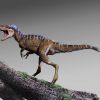 +7 +2
+7 +2A New Species of Tiny Tyrannosaur Helps Explain the Rise of T. rex
Scientists have discovered a new species of tiny tyrannosaur that lived some 95 million years ago in what’s now Utah. The find helps fill a frustrating gap in the fossil record at a critical time when tyrannosaurs were evolving from small, speedy hunters, into the bone-crushing apex predators we know so well. The new dinosaur has been dubbed Moros intrepidus, and its name means “harbinger of doom.” The creature, known only from a leg bone and some various teeth, weighed under 200 pounds as a fully-grown adult. It was a specialist predator and scientists say it was fast enough to easily run down prey while avoiding other meat-eaters.
-
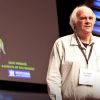 +25 +5
+25 +5Where are the baby dinosaurs?
In a spellbinding talk, paleontologist Jack Horner tells the story of how iconoclastic thinking revealed a shocking secret about some of our most beloved dinosaurs.
-
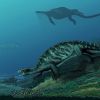 +2 +1
+2 +1Triassic Cancer—Osteosarcoma in a 240-Million-Year-Old Stem-Turtle
Paleopathology, the study of ancient disease, is a vital way by which we understand the evolution of pathogens, immune systems, healing physiology, and ultimately the environment. Cancer research has focused on its prevalence in various organisms and has found that although some animals have a high propensity for cancer,1 others seem to be resistant.2 The prevalence of cancer in the tree of life is certainly interesting, but its antiquity should be regarded with equal interest considering the increase in human cancer, which has been related to environmental and genetic changes, and the extreme rarity of cancer in the fossil record.
-
 +22 +5
+22 +5Photos: Carnivorous Dinosaur Discovered in Italian Alps
This meat-eating dinosaur was the first of its kind to be huge.
-
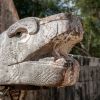 +41 +11
+41 +11Why We Love Dinosaurs
People have always known of dinosaurs, though they have called them by many names. Old legends that place Western dragons in caves…
-
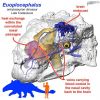 +10 +3
+10 +3Dinosaurs' noses may have air-conditioned their brains
The earth was a much hotter place in prehistoric times, so it follows that large heavily-armored dinosaurs likely retained a lot of heat in their bodies. A new study suggests that their brains were protected from overheating, however, thanks to a heat exchanging system in their noses.
-
 +12 +2
+12 +2Scientists: World's Oldest Large-Predator Dinosaur Was Italian
Saltriovenator is the first Italian dinosaur of the Jurassic age and the only dinosaur found in the Lombardy region. Wednesday Italian paleontologists presented evidence that the world’s oldest large-predator dinosaur inhabited the European country some 200 million years ago. "Saltriovenator predates the massive meat-eating dinosaurs by over 25 million years and sheds light on the evolution of the three-fingered hand of birds," Dal Sasso of Milan's Natural History Museum said in a statement.
-
 +26 +1
+26 +1Scientists Are Excited Over These 'Weird' Feathers Preserved in 100-Million-Year-Old Amber
Feathers found in Burmese amber dating back 100 million years are so exquisitely preserved that palaeontologists have been able to make a detailed study of their structure - and they're like nothing seen in living birds today.
-
 +12 +2
+12 +2Tiny raptor tracks lead to big discovery
Tracks made by dinosaurs the size of sparrows have been discovered in South Korea by an international team of palaeontologists. University of Queensland researcher Dr Anthony Romilio was part of the team which described the tracks, which were originally found by Professor Kyung Soo Kim from Chinju National University of Education, South Korea.
-
 +18 +3
+18 +3Birds Got Their Colorful, Speckled Eggs From Dinosaurs
A new study found that birds' dinosaur relatives had eggs with traces of two pigments—a red-brown one and a blue-green one. In today's birds that might produce a color such as robin's egg blue.
-
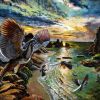 +26 +7
+26 +7New species of ‘missing link’ between dinosaurs and birds identified
Known as the ‘Icon of Evolution’ and ‘the missing link’ between dinosaurs and birds, Archaeopteryx has become one of the most famous fossil discoveries in Palaeontology. Now, as part of an international team of scientists, researchers at The University of Manchester have identified a new species of Archaeopteryx that is closer to modern birds...
-
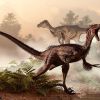 +8 +3
+8 +3‘Superlungs’ gave dinosaurs the energy to run and fight
In the oxygen-poor air of the Mesozoic era, nothing should have been able to move very fast. But Velociraptors could run 64 kilometers per hour. Their secret weapon: superefficient, birdlike lungs, which would have pumped in a constant supply of oxygen, according to a new study. This unique adaptation may have given all dinos a leg up on their competition.
-
 +22 +2
+22 +2A Mysterious Fossil Points to the Origins of Lizards and Snakes
The ancestors of today’s squamates were lost in time. Now paleontologists have identified the earliest known example: Meet Megachirella.
-
 +10 +2
+10 +2'World-class' skeleton of herbivorous dinosaur excavated in Hokkaido
Announcing the completion of time-consuming “cleaning” work, a research team in Hokkaido has unveiled what it claims is the largest dinosaur skeleton ever found in Japan. Through the work to remove rocks and sediments in which the fossils were embedded, a total of 157 pieces were identified as bones of a large herbivorous dinosaur from the Hadrosaurid family, according to the team comprising curators of the Hobetsu Museum in Mukawa, Hokkaido, and Yoshitsugu Kobayashi, an associate professor at the Hokkaido University Museum.
-
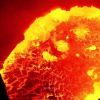 +6 +2
+6 +2Before the dinosaurs, a million-year long volcanic eruption destroyed the ozone layer
It's known as the "Great Dying," an extinction event even more powerful than the one that killed the dinosaurs 65 million years ago. It's called the Permian-Triassic extinction event, and it took place 250 million years ago, before dinosaurs ruled the Earth. Scientists previously believed the Permian-Triassic extinction event happened because of a volcanic eruption. And not just any volcanic eruption... the volcanic eruption. Called the "Siberian Flood Basalts," this million-year-long volcanic eruption potentially caused the extinction of up to 96 percent of marine life, along with 70 percent of terrestrial vertebrate species.
Submit a link
Start a discussion




















